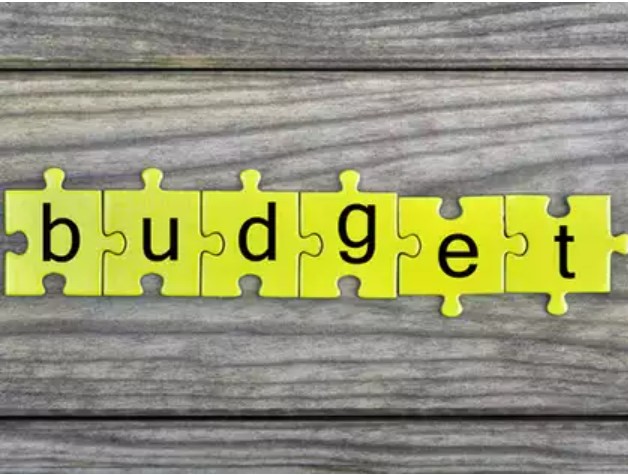The current fiscal deficit is already 6.4%, and this needs slashing in the medium term. However, that may not be possible in the short term, with a recession staring us in the face. That strengthens the case for a status quo budget that keeps the fiscal deficit at around 6.4%.
Europe has slipped into recession already, and the worst is yet to come globally. Central banks across the world are raising interest rates to tame stubborn inflation, and many analysts fear this could precipitate a much deeper global recession in the second half of 2023.
The Chinese economy could rebound or stagnate with Covid. Meanwhile, the fate of the Ukraine war remains uncertain. The best-case scenario would be a ceasefire followed by diplomatic negotiations. The worst-case scenario would be an escalation of the war and possible use of tactical nuclear weapons, which could send stock markets and the world economy into an absolute tizzy.
Conservatively Ambitious
Faced with such global headwinds, budget-making is going to be a very tough exercise. The classic response to a coming recession is to go for a big stimulus to offset the downswing. But a recession normally strikes at the height of a business cycle when the fiscal deficit is already low. Today, the deficit is sky-high at 6.4%.
So, the finance minister would do well to craft a status quo budget that keeps the deficit at 6.4%, going for neither a stimulus nor fiscal consolidation. Such an approach will also provide fiscal flexibility up or down, depending on whether global trends approximate the best- or worst-case scenario.
The combined deficit of the Centre and states is close to 10%. This would be high enough to precipitate a financial crisis in most developing countries. India escapes because its growth rate is fast enough to absorb large deficits. But these have an inexorable long-term effect. Rising deficits mean rising interest payments that keep eroding the revenue available for future social, welfare and infrastructure spending. This erosion is not dramatic in the short run, and so is often ignored. But, in the long term, it will make a return to 7% GDP growth impossible.
An August 2022 research paper, ‘The Anatomy of Public Debt Reductions in India’ (bit.ly/3YIC9r8), by the International Monetary Fund’s Prachi Mishra and Nikhil Patel notes that the ratio of interest payments to government revenue has risen over the years to almost 30% in India. By contrast, the ratio is barely 10% in other emerging markets. Moreover, in India, the elasticity of borrowing costs to the debt-GDP ratio is high. That is, for every 1% increase in the debt-GDP ratio, interest rates will rise more than 1%.
Thanks to the fiscal stimulus to combat Covid, India’s debt-GDP ratio has shot up to almost 90% (though inflation is now eroding the ratio). The interest rate on gilts has also increased, creating a double whammy for interest payments. This not only erodes fiscal space but it also reduces returns to private sector investment. The future economic growth of India is going to be private sector-led. The higher the interest rate, the slower this will be.
Optimists argue that government borrowing does not crowd out private borrowing in recessionary conditions. That may look obvious in the short run. But a cumulative rise in the deb-GDP ratio hits longer-term private investment through higher interest rates, something not visible to short-termists.
Traditional fiscal theory has, in the last decade, been challenged by many economists. Many countries have ignored past fiscal norms and gone for major stimuli without suffering inflationary consequences, as in earlier decades. Proponents of ‘secular stagnation’ like Larry Summers argue that modern demographics, with new savings and expenditure patterns, are giving the world a long-term savings glut that will keep interest rates very low. If, indeed, interest rates stay very low, then borrowing more may not entail a rising interest burden.
Assertive Assets No Longer
But that notion is under challenge. After years of stimulus without high inflation, prices have skyrocketed across the world. Earlier, fiscal stimuli translated into higher asset prices – of shares, real estate, gold, cryptos – while consumer prices rose very little. But, today, asset prices are falling while consumer prices are rising fast. This structural shift shows fiscal deficits do, indeed, matter, although perhaps less than before.
When the Great Recession struck in 2008, India’s fiscal deficit was down to 2.7% of GDP. So, the finance minister could sharply increase the fiscal deficit to 6.7% to combat that recession. Such a huge increase is unthinkable today. The current fiscal deficit is already 6.4%, and this needs slashing in the medium term. However, that may not be possible in the short term, with a recession staring us in the face. That strengthens the case for a status quo budget that keeps the fiscal deficit at around 6.4%.
The second concern is flexibility. We live in highly volatile times. The impact of global trends on India is huge, but not knowable. If conditions deteriorate towards a worst-case scenario, falling revenue will increase our fiscal deficit – and, hence, stimulus – automatically. It is better to increase the stimulus from a modest baseline than a high one.
If, on the other hand, world conditions improve dramatically, revenue will be higher than anticipated and the fiscal deficit should come down automatically, fulfilling longer-term requirements. A status quo budget will provide such flexibility. That is the way to go.
This article was originally published by The Economic Times on Dec 27,2022


